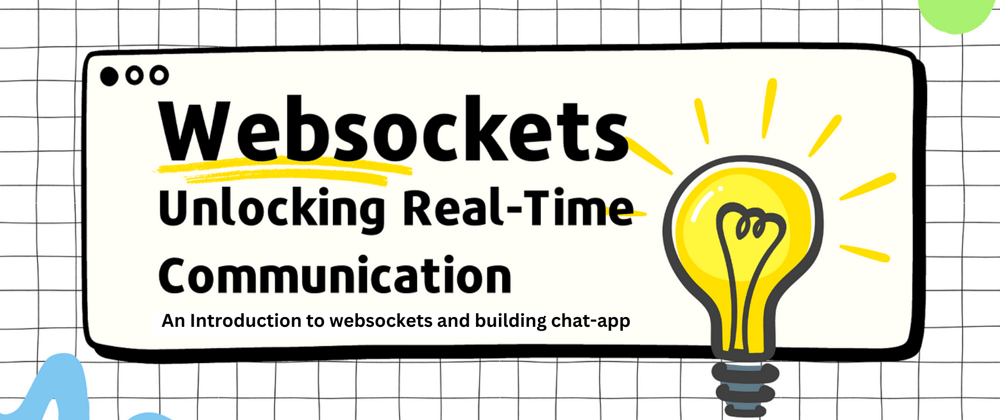Introduction
WebSockets provide a full-duplex communication channel over a single TCP connection, enabling real-time data transfer between clients and servers. Unlike traditional HTTP requests, WebSockets allow continuous data exchange without repeatedly opening and closing connections, making them ideal for chat applications, live notifications, and collaborative tools.
How WebSockets Work
| Step | Description |
|---|---|
| 1. Handshake | The client sends an HTTP request to initiate a WebSocket connection. |
| 2. Connection Upgrade | The server responds with an upgrade header, switching the connection from HTTP to WebSocket. |
| 3. Persistent Connection | Once established, the connection remains open, allowing real-time bidirectional communication. |
| 4. Data Exchange | Messages can be sent between the client and server without re-establishing a connection. |
| 5. Connection Close | Either party can terminate the connection when communication is complete. |
Implementing WebSockets in JavaScript
1. Setting Up a WebSocket Server (Node.js)
const WebSocket = require('ws');
const server = new WebSocket.Server({ port: 8080 });
server.on('connection', (ws) => {
console.log('New client connected');
ws.on('message', (message) => {
console.log(`Received: ${message}`);
ws.send(`Echo: ${message}`);
});
ws.on('close', () => {
console.log('Client disconnected');
});
});2. Connecting a WebSocket Client (JavaScript)
const ws = new WebSocket('ws://localhost:8080');
ws.onopen = () => {
console.log('Connected to WebSocket server');
ws.send('Hello Server!');
};
ws.onmessage = (event) => {
console.log(`Message from server: ${event.data}`);
};
ws.onclose = () => {
console.log('Disconnected from server');
};Use Cases of WebSockets
- Real-time Chat Applications – Enables instant messaging with low latency.
- Live Notifications – Used for stock price updates, sports scores, and breaking news alerts.
- Collaborative Editing – Applications like Google Docs leverage WebSockets for real-time collaboration.
- Online Gaming – WebSockets allow smooth multiplayer interactions with minimal lag.
- IoT Device Communication – Facilitates real-time monitoring and control of IoT devices.
Best Practices for WebSockets
- Handle Disconnections Gracefully – Implement reconnection strategies.
- Use Secure WebSockets (wss://) – Encrypt communication to protect sensitive data.
- Limit Concurrent Connections – Prevent server overload by managing active connections.
- Optimize Data Transfer – Use binary data formats (e.g., MessagePack) for efficiency.
- Monitor WebSocket Traffic – Use tools like WebSocket debugging proxies to analyze traffic.
Conclusion
WebSockets revolutionize real-time communication by enabling persistent, bidirectional data exchange. By leveraging WebSockets, developers can build interactive and high-performance applications, such as chat systems, live dashboards, and collaborative platforms. Implementing best practices ensures scalability, security, and reliability in WebSocket-based applications.

